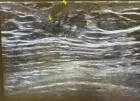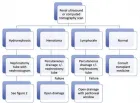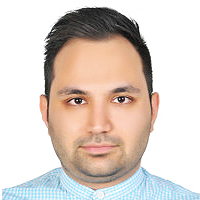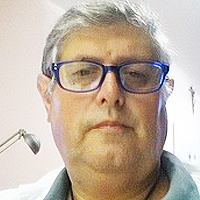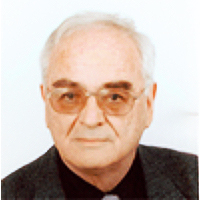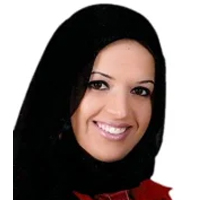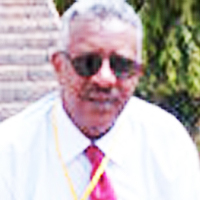Table of Contents
Esthetic recovery of permanent Mandibular Lateral Incisor using biological post after non-surgical healing of Periradicular Lesion: A Case Report
Published on: 22nd June, 2017
OCLC Number/Unique Identifier: 7286353205
Statement of the problem: Anterior tooth fracture, as a result of traumatic injuries, frequently occurs in dentistry. This leads to necrosis of pulp and periapical pathology. The goal of endodontic and restorative dentistry is to retain natural teeth with maximum function and pleasing esthetics.
Purpose of the study: This study aimed at proper reconstruction of extensively damaged teeth through the procedure known as “Biological Restoration.”
Materials and methods: Biological post obtained through natural, extracted teeth from another individual represents a low-cost option and alternative technique for the morphofunctional recovery of damaged anterior teeth that provides highly functional and esthetic outcomes.
Conclusions: This case report refers to the esthetics and functional recovery of mandibular left lateral incisor after non-surgical healing of periradicular lesion.
Bruxism: Its multiple causes and its effects on Dental Implants: A Review
Published on: 12th May, 2017
OCLC Number/Unique Identifier: 7286350944
The rehabilitation of partially or completely edentulous patients with implant supported prostheses has been widely used, achieving high success rates. However, many studies consider the presence of bruxism as a contraindication for this treatment modality. The purpose of this study was to review the literature and identify risk factors in implant supported rehabilitation planning in subjects with bruxism. The rehabilitation of bruxers using implant supported prostheses, using implants with adequate length and diameter, as well as proper positioning, seems to be a reliable treatment with reduced risks of failure. Bruxism control through the use of a night guard by rigid occlusal stabilization appliance, relieved in the region of implants, is highly indicated. Although it is clear that implant supported rehabilitation of patients with bruxism requires adequate planning and follow-up, well-designed randomized controlled trials are needed to provide reliable evidence on the long-term success of this treatment modality.
Clown language training in Dental education: Dental Student’s Perspective
Published on: 9th May, 2017
OCLC Number/Unique Identifier: 7286356938
Clowning is a form of humour. It is an art form that invites play, interaction, and laughter. Clown Care is a programme in hospitals and medical centres involving visits from specially trained hospital clowns. Clowning helps patients to focus on something other than their illness. Olsson et al. and Spitzer suggested that clown care could create a warm climate, promote good interpersonal relationships, and relieve feelings of frustration, anxiety, or hostility. Hospital clowns work worldwide as a health humanization resort, providing interplay with patients, family and staff creating a positive emotional state that fosters affirmative environmental conditions. This type of activity varies greatly in terms of professionalism, accountability and artistic methods. Promotion of emotional and psychosocial well-being of patients transcends opportunities for oral health promotion activities in hospitals, schools and community. Previous research reports on clown training reflects attitude-building potential for the healthcare students provided that it is performed in a deep, essential, strict and continuous fashion in a facultative manner rather than mandatory allowing the student to build his own artistic, professional and personal path. Thus, the prospect of introducing training curriculum of this underrated non-technical skill for dental students in Indian dental education system needs to be harnessed.
External Root Resorption associated with Impacted Third Molars: A Case Report
Published on: 26th April, 2017
OCLC Number/Unique Identifier: 7286358319
The indications for impacted third molar extraction include the prevention of dental reabsorption on the adjacent tooth. Resorption can be classified as physiological (when deciduous teeth are exfoliated) or pathological (when caused by injury or irritation to the periodontal ligament). Many causes can trigger external root resorption (ERR), the most common cause of which is orthodontic forces. The most common cases of ERR involve impacted third molars which, due to the lack of space for their eruption, generate a greater chance of ERR on the distal portion of the second molar. This pathology is becoming progressively more frequent in clinical dental care. Periapical and panoramic radiographs are used to aid in diagnosis, as is cone beam computed tomography. In cone beam computed tomography scans, radiolucent areas with irregular gaps are detected; these gaps represent a significant loss of dental material. The objectives of this article were to report a case of second molar resorption triggered by an impacted third molar and to perform a review of the literature on the causes of external root resorption. Ideally, this information will aid dental clinicians (and orthodontists in particular) in understanding the features of this pathology so that they may recommend preventive third molar extraction when necessary.
Orthodontics Miniscrews to Correct an Anchorage Loss: Case Report
Published on: 7th April, 2017
OCLC Number/Unique Identifier: 7286424900
The recent introduction of the miniscrew in orthodontics revolutionized the clinical and biomechanical approach of anchoring. Used as direct or indirect anchoring, the orthodontic micro screws indications field is expanding due to their easy insertion, and their immediate loading ensuring an absolute anchoring. Our objective through this clinical case is to show the effectiveness of these miniscrews in the correction of the uncontrolled loss of anchoring.

If you are already a member of our network and need to keep track of any developments regarding a question you have already submitted, click "take me to my Query."






